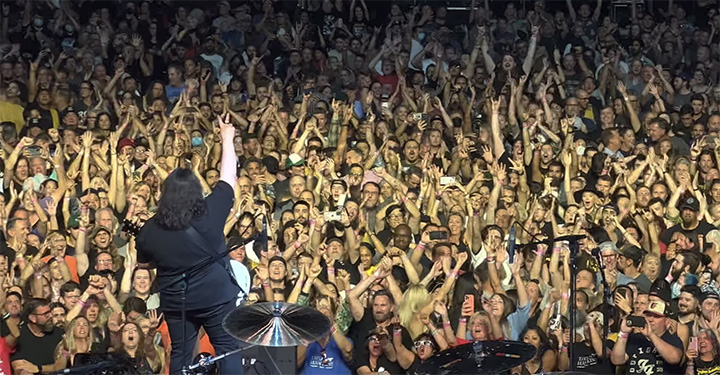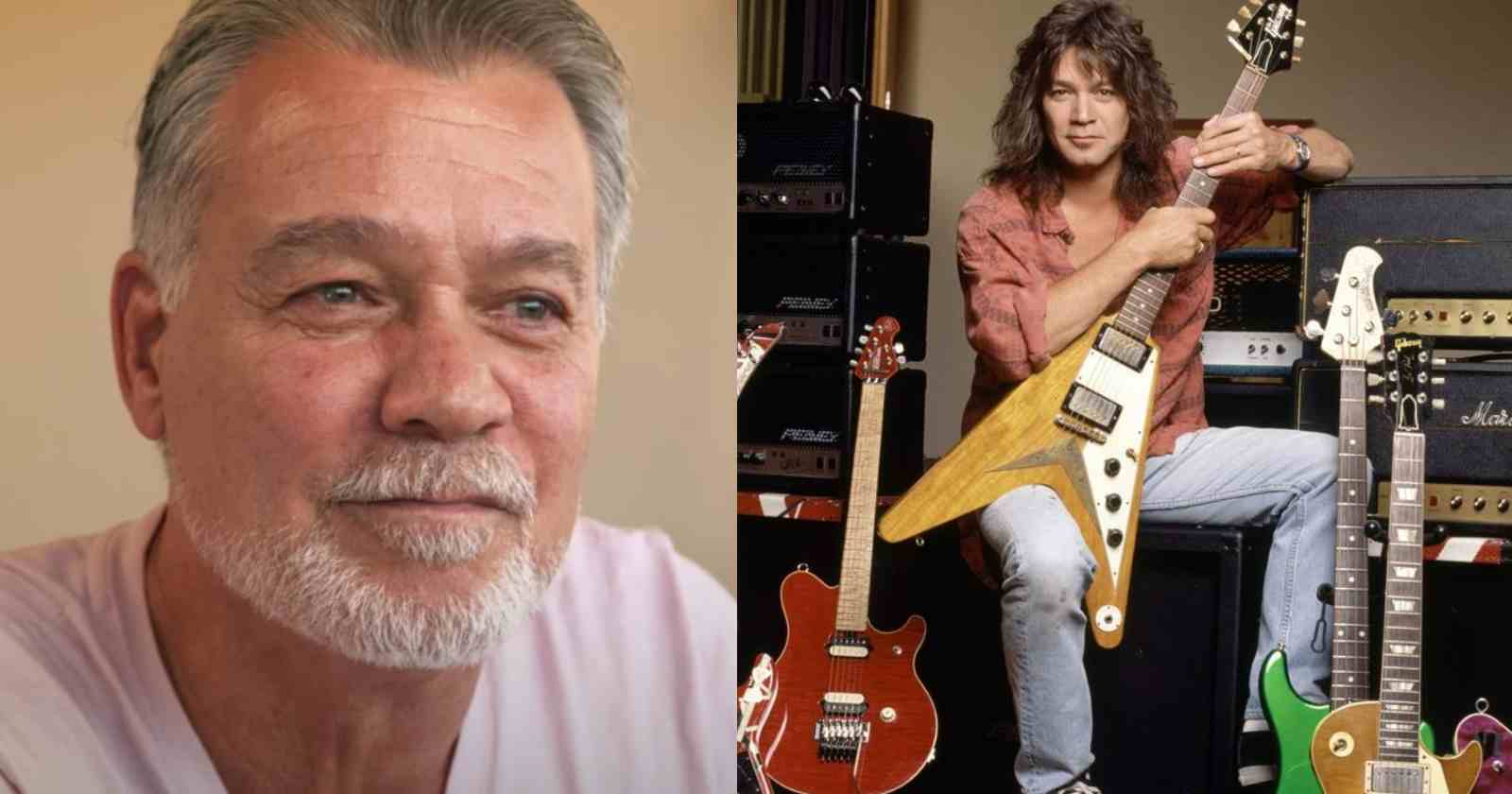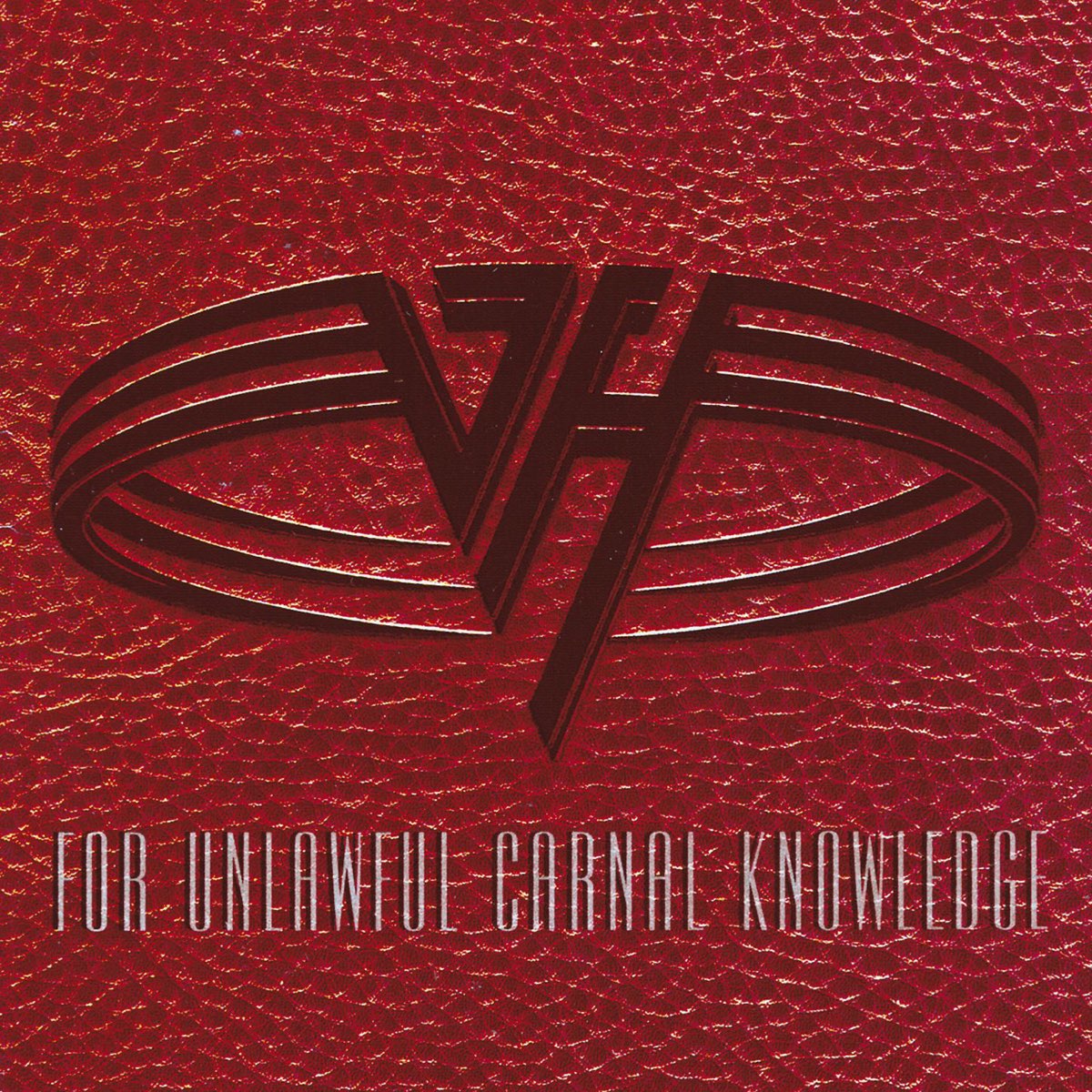Van Halen’s Musical Legacy

Van Halen, a name synonymous with electrifying rock ‘n’ roll, has left an indelible mark on the musical landscape. From their early days of hard-rocking anthems to their later explorations of blues and pop influences, the band’s evolution across different eras has captivated audiences worldwide. Their innovative guitar techniques, dynamic stage performances, and distinct vocal styles have shaped the sound of rock music for generations.
The Band’s Evolution
Van Halen’s musical journey can be divided into distinct eras, each marked by significant lineup changes, musical styles, and critical acclaim.
- The David Lee Roth Era (1972-1985): This period saw the band’s rise to fame, fueled by Roth’s charismatic stage presence and Eddie Van Halen’s groundbreaking guitar work. Their debut album, “Van Halen” (1978), became a massive success, with hits like “Runnin’ with the Devil” and “Eruption” showcasing their raw energy and technical prowess. The following albums, “Women and Children First” (1980), “Fair Warning” (1981), and “Diver Down” (1982), solidified their status as rock icons.
- The Sammy Hagar Era (1985-1996): After Roth’s departure, Van Halen recruited Sammy Hagar, known for his blues-infused rock vocals. This era produced albums like “5150” (1986) and “OU812” (1988), which featured hits like “Jump” and “Right Now.” While Hagar brought a different vocal style and musical direction, the band’s core sound remained intact, blending blues, hard rock, and pop elements.
- The Gary Cherone Era (1996-2004): Following Hagar’s departure, Van Halen recruited Gary Cherone, known for his powerful vocals in the band Extreme. The album “Van Halen III” (1998) showcased a heavier, more experimental sound. Despite the album’s mixed reception, it demonstrated the band’s willingness to push boundaries and explore new musical territory.
- The David Lee Roth Reunion (2006-2007): After a 20-year hiatus, Roth rejoined the band for a reunion tour and a new album, “This Is the Best” (2007). The reunion generated immense excitement among fans, showcasing the enduring power of Van Halen’s classic sound.
Eddie Van Halen’s Guitar Techniques
Eddie Van Halen’s innovative guitar techniques revolutionized rock music. His signature “tapping” technique, where he used his fingers to tap the strings on the fretboard, created unique and complex sounds that inspired countless guitarists. His use of harmonics, legato runs, and dive bombs added a layer of virtuosity and complexity to his playing, pushing the boundaries of what was possible on the electric guitar.
“Eddie’s guitar playing was unlike anything anyone had ever heard before. He was a true innovator, and his influence on modern guitarists is immeasurable.” – Joe Satriani, renowned guitarist
David Lee Roth vs. Sammy Hagar
The vocal styles of David Lee Roth and Sammy Hagar significantly shaped the sound and image of Van Halen. Roth’s high-pitched, energetic vocals were a hallmark of the band’s early years, perfectly complementing their hard-rocking sound. Hagar, on the other hand, brought a bluesier, more soulful approach, adding a new dimension to the band’s music.
- David Lee Roth: Roth’s flamboyant stage presence and energetic vocals were a defining characteristic of the band’s early years. His vocal style was characterized by high-pitched screams, rapid-fire delivery, and a playful, almost theatrical delivery. He was a master of stage presence, engaging the audience with his energetic performances and witty banter.
- Sammy Hagar: Hagar’s vocals were known for their bluesy grit and soulful power. His more melodic approach contrasted with Roth’s high-energy style, adding a different dimension to the band’s music. Hagar’s vocals often featured extended vocal runs and a bluesy inflection, bringing a new depth and complexity to the band’s sound.
Live Performances and Visual Elements
Van Halen’s live performances were legendary, known for their high-energy, pyrotechnic-laden spectacles. Eddie Van Halen’s guitar solos were a highlight of their shows, with his signature tapping techniques and elaborate stage presence captivating audiences. The band’s use of lighting, smoke, and pyrotechnics created a visually stunning experience, enhancing the impact of their music.
Timeline of Van Halen’s History
- 1972: Van Halen is formed in Pasadena, California, by brothers Eddie and Alex Van Halen, David Lee Roth (vocals), and Michael Anthony (bass).
- 1978: The band releases their self-titled debut album, “Van Halen,” which becomes a massive success.
- 1985: David Lee Roth leaves the band, and Sammy Hagar joins as the new vocalist.
- 1986: Van Halen releases “5150,” their first album with Sammy Hagar. The album features the hit singles “Jump” and “Why Can’t This Be Love.”
- 1996: Sammy Hagar leaves the band, and Gary Cherone joins as the new vocalist.
- 1998: Van Halen releases “Van Halen III,” their first album with Gary Cherone.
- 2004: Gary Cherone leaves the band, and Eddie Van Halen and Alex Van Halen announce an indefinite hiatus.
- 2006: David Lee Roth rejoins the band for a reunion tour.
- 2007: Van Halen releases “This Is the Best,” their first album with David Lee Roth since 1984.
- 2012: Eddie Van Halen announces his battle with throat cancer.
- 2015: David Lee Roth announces his departure from the band.
- 2017: Eddie Van Halen announces his recovery from throat cancer.
- 2020: Eddie Van Halen passes away at the age of 65.
The Eddie Van Halen Phenomenon

Eddie Van Halen was more than just a guitarist; he was a force of nature, a musical innovator who redefined the boundaries of rock guitar playing. His unique style, technical prowess, and groundbreaking innovations left an indelible mark on the music world, inspiring generations of guitarists and shaping the sound of rock music for decades to come.
Eddie Van Halen’s Mastery of the Electric Guitar
Eddie Van Halen’s mastery of the electric guitar was a result of his tireless dedication, relentless experimentation, and a natural gift for pushing the limits of what was considered possible on the instrument. He seamlessly blended elements of classical, jazz, and blues into his playing, creating a distinctive sound that was both technically impressive and emotionally resonant. His signature techniques, such as two-handed tapping, harmonics, and dive bombs, became instantly recognizable and widely imitated, influencing a generation of guitarists who sought to emulate his virtuosity.
The Impact of the “Brown Sound”
Eddie Van Halen’s iconic “Brown Sound” was a revolutionary tone that became synonymous with his name. It was achieved through a combination of his signature guitar, the Frankenstrat, a custom-built instrument that blended elements of a Fender Stratocaster and a Gibson Les Paul, and his unique use of a modified Marshall amplifier. The “Brown Sound” was characterized by its warm, thick, and aggressive tone, with a powerful low-end and a distinct midrange punch. It became a sought-after sound for rock guitarists, and countless guitarists have tried to replicate it, using various techniques and equipment.
A Famous Eddie Van Halen Riff
The iconic opening riff of “Eruption” is a perfect example of Eddie Van Halen’s innovative approach to guitar playing. This riff, which features extensive use of two-handed tapping, harmonics, and dive bombs, is a testament to his technical brilliance and creative spirit.
“`
e|—————————————————————————|
B|—————————————————————————|
G|—————————————————————————|
D|—————————————————————————|
A|-5-5-5-5-5-5-5-5-5-5-5-5-5-5-5-5-5-5-5-5-5-5-5-5-5-5-5-5-5-5-5-5-5-5-5-|
E|—————————————————————————|
“`
Eddie Van Halen’s Most Influential Guitar Solos
Eddie Van Halen’s guitar solos were not mere technical exercises; they were musical masterpieces that showcased his emotional depth, creativity, and technical virtuosity. His solos were often characterized by their melodic beauty, their unexpected turns and twists, and their ability to convey a wide range of emotions. Here are a few of his most influential guitar solos:
- “Eruption” (1978): This iconic solo, which featured extensive use of two-handed tapping, harmonics, and dive bombs, helped to define Eddie Van Halen’s signature sound and paved the way for a new generation of guitarists. It was released on Van Halen’s debut album, which was also titled “Van Halen”.
- “Ain’t Talkin’ ‘Bout Love” (1978): This bluesy, soulful solo, which showcased Eddie Van Halen’s ability to play with both speed and feeling, was another highlight of Van Halen’s debut album.
- “Jump” (1984): This synth-driven solo, which featured Eddie Van Halen’s signature “Brown Sound” and his use of a synthesizer, was a departure from his earlier work but still showcased his innovative approach to guitar playing. It was the title track from the album “1984”.
The Evolution of Eddie Van Halen’s Guitar Playing
Eddie Van Halen’s guitar playing evolved throughout his career, reflecting his ongoing experimentation and his desire to push the boundaries of what was possible on the instrument. His early work was characterized by its raw energy, its bluesy roots, and its technical virtuosity. In the 1980s, his music became more polished and sophisticated, incorporating elements of synth-pop and funk. In his later years, he continued to experiment with new sounds and techniques, exploring the use of digital effects and incorporating elements of jazz and classical music into his playing.
Van Halen’s Cultural Influence

Van Halen, with their groundbreaking blend of hard rock, heavy metal, and pop sensibilities, left an undeniable mark on music and culture. Their influence extended far beyond the realm of music, permeating fashion, television, and film, shaping the landscape of popular culture in profound ways.
Van Halen’s Influence on Hard Rock and Heavy Metal Music
Van Halen’s innovative approach to hard rock and heavy metal music significantly shaped the genre’s evolution. They introduced elements of pop and blues into their music, creating a more accessible and commercially viable sound that appealed to a broader audience.
- Eddie Van Halen’s virtuoso guitar playing revolutionized the use of the electric guitar in hard rock and heavy metal. His innovative techniques, including tapping, dive bombs, and harmonic squeals, became staples of the genre.
- The band’s energetic live performances and charismatic stage presence inspired countless musicians and bands, setting a new standard for rock and roll shows.
- Van Halen’s influence can be seen in the work of numerous artists, including Guns N’ Roses, Metallica, and countless others who adopted elements of their sound and style.
Van Halen’s Influence on Music Videos
Van Halen’s music videos were groundbreaking in their time, pushing the boundaries of visual creativity and helping to popularize the use of music videos as a promotional tool.
- Their videos, often featuring elaborate sets, pyrotechnics, and captivating performances, helped to elevate the music video to a new level of artistry.
- The band’s innovative use of visual effects and storytelling in their music videos paved the way for the elaborate and visually stunning music videos that are commonplace today.
- Their videos, such as “Jump” and “Panama,” became iconic, contributing to the band’s popularity and influencing a generation of music video directors.
Van Halen’s Lasting Legacy on Popular Culture
Van Halen’s influence extends far beyond the realm of music. Their impact can be seen in fashion, television, and film, where their music, style, and persona continue to resonate with audiences.
- The band’s iconic look, featuring leather jackets, ripped jeans, and signature hairstyles, became a symbol of rock and roll rebellion and influenced fashion trends for generations.
- Van Halen’s music has been featured in numerous films and television shows, including “Top Gun,” “The Hangover,” and “Stranger Things,” cementing their place in popular culture.
- The band’s influence can be seen in the work of countless musicians, actors, and filmmakers who were inspired by their music and style.
Van Halen’s Interactions with Fans
Van Halen’s connection with their fans was legendary. Their live performances were known for their high energy and audience interaction, creating a sense of community and shared experience.
- The band’s commitment to their fans was evident in their frequent meet-and-greets, autograph signings, and willingness to engage with their audience.
- Their music provided a soundtrack for countless fans’ lives, serving as a source of inspiration, empowerment, and shared experiences.
- The band’s legacy continues to inspire and influence new generations of fans, ensuring that their music and message will live on for years to come.
Van Halen’s Cultural Influence: A Summary
| Aspect of Popular Culture | Van Halen’s Influence |
|---|---|
| Music | Pioneered a blend of hard rock, heavy metal, and pop; introduced innovative guitar techniques; influenced countless artists |
| Fashion | Iconic look with leather jackets, ripped jeans, and signature hairstyles; influenced rock and roll fashion trends |
| Television and Film | Music featured in numerous films and TV shows; influenced visual style and storytelling |
| Fans | Strong connection with fans; high-energy live performances; music provided a soundtrack for countless lives |
Van Halen, the legendary rock band, was known for their energetic live shows and Eddie Van Halen’s guitar virtuosity. But even rock stars need to watch their weight sometimes, and maybe Eddie would have enjoyed a skinny cow after a long night of shredding.
After all, a little indulgence is okay, even if you’re a rock god.
Van Halen’s Eddie Van Halen was a guitar legend, and his solos were legendary for their insane speed and technicality. But you know what else is insane? Adam Sandler’s new special, adam sandler new special , is seriously funny and full of crazy characters.
It reminds me of Van Halen’s music – it’s totally unexpected, full of energy, and always leaves you wanting more.
